Adrian Ulges
Integrating Expert Labels into LLM-based Emission Goal Detection: Example Selection vs Automatic Prompt Design
Dec 09, 2024Abstract:We address the detection of emission reduction goals in corporate reports, an important task for monitoring companies' progress in addressing climate change. Specifically, we focus on the issue of integrating expert feedback in the form of labeled example passages into LLM-based pipelines, and compare the two strategies of (1) a dynamic selection of few-shot examples and (2) the automatic optimization of the prompt by the LLM itself. Our findings on a public dataset of 769 climate-related passages from real-world business reports indicate that automatic prompt optimization is the superior approach, while combining both methods provides only limited benefit. Qualitative results indicate that optimized prompts do indeed capture many intricacies of the targeted emission goal extraction task.
LAPDoc: Layout-Aware Prompting for Documents
Feb 15, 2024Abstract:Recent advances in training large language models (LLMs) using massive amounts of solely textual data lead to strong generalization across many domains and tasks, including document-specific tasks. Opposed to that there is a trend to train multi-modal transformer architectures tailored for document understanding that are designed specifically to fuse textual inputs with the corresponding document layout. This involves a separate fine-tuning step for which additional training data is required. At present, no document transformers with comparable generalization to LLMs are available That raises the question which type of model is to be preferred for document understanding tasks. In this paper we investigate the possibility to use purely text-based LLMs for document-specific tasks by using layout enrichment. We explore drop-in modifications and rule-based methods to enrich purely textual LLM prompts with layout information. In our experiments we investigate the effects on the commercial ChatGPT model and the open-source LLM Solar. We demonstrate that using our approach both LLMs show improved performance on various standard document benchmarks. In addition, we study the impact of noisy OCR and layout errors, as well as the limitations of LLMs when it comes to utilizing document layout. Our results indicate that layout enrichment can improve the performance of purely text-based LLMs for document understanding by up to 15% compared to just using plain document text. In conclusion, this approach should be considered for the best model choice between text-based LLM or multi-modal document transformers.
IRT2: Inductive Linking and Ranking in Knowledge Graphs of Varying Scale
Jan 02, 2023Abstract:We address the challenge of building domain-specific knowledge models for industrial use cases, where labelled data and taxonomic information is initially scarce. Our focus is on inductive link prediction models as a basis for practical tools that support knowledge engineers with exploring text collections and discovering and linking new (so-called open-world) entities to the knowledge graph. We argue that - though neural approaches to text mining have yielded impressive results in the past years - current benchmarks do not reflect the typical challenges encountered in the industrial wild properly. Therefore, our first contribution is an open benchmark coined IRT2 (inductive reasoning with text) that (1) covers knowledge graphs of varying sizes (including very small ones), (2) comes with incidental, low-quality text mentions, and (3) includes not only triple completion but also ranking, which is relevant for supporting experts with discovery tasks. We investigate two neural models for inductive link prediction, one based on end-to-end learning and one that learns from the knowledge graph and text data in separate steps. These models compete with a strong bag-of-words baseline. The results show a significant advance in performance for the neural approaches as soon as the available graph data decreases for linking. For ranking, the results are promising, and the neural approaches outperform the sparse retriever by a wide margin.
Addressing Leakage in Self-Supervised Contextualized Code Retrieval
Apr 17, 2022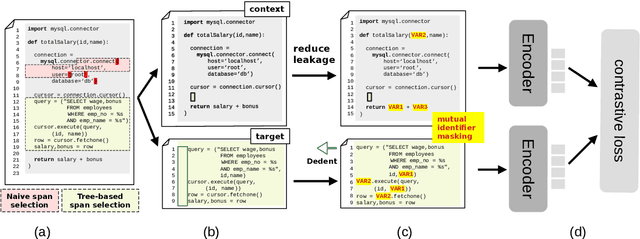

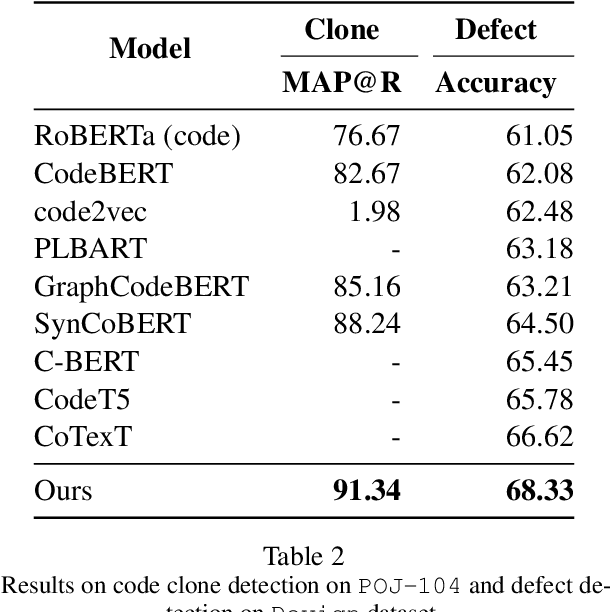
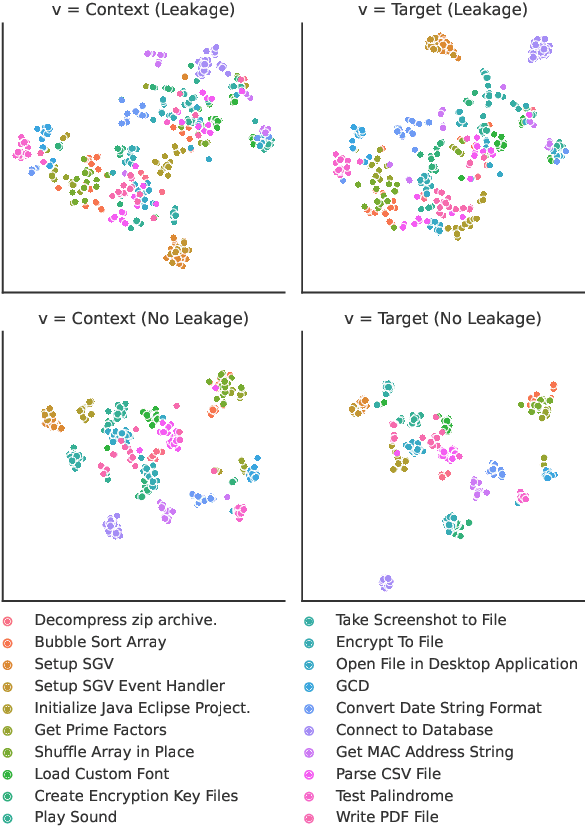
Abstract:We address contextualized code retrieval, the search for code snippets helpful to fill gaps in a partial input program. Our approach facilitates a large-scale self-supervised contrastive training by splitting source code randomly into contexts and targets. To combat leakage between the two, we suggest a novel approach based on mutual identifier masking, dedentation, and the selection of syntax-aligned targets. Our second contribution is a new dataset for direct evaluation of contextualized code retrieval, based on a dataset of manually aligned subpassages of code clones. Our experiments demonstrate that our approach improves retrieval substantially, and yields new state-of-the-art results for code clone and defect detection.
An End-to-end Model for Entity-level Relation Extraction using Multi-instance Learning
Feb 11, 2021

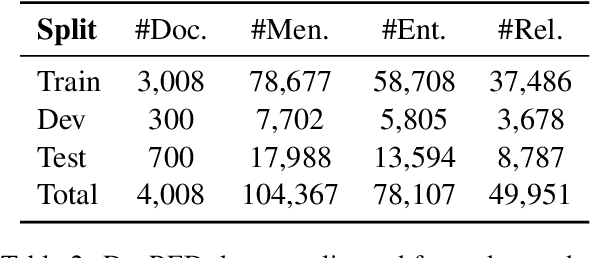
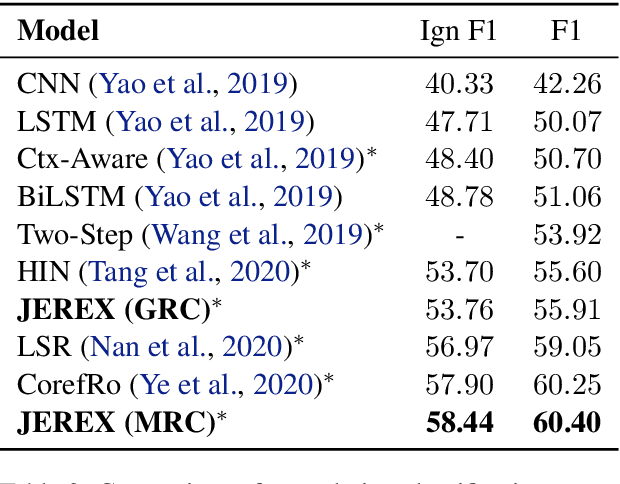
Abstract:We present a joint model for entity-level relation extraction from documents. In contrast to other approaches - which focus on local intra-sentence mention pairs and thus require annotations on mention level - our model operates on entity level. To do so, a multi-task approach is followed that builds upon coreference resolution and gathers relevant signals via multi-instance learning with multi-level representations combining global entity and local mention information. We achieve state-of-the-art relation extraction results on the DocRED dataset and report the first entity-level end-to-end relation extraction results for future reference. Finally, our experimental results suggest that a joint approach is on par with task-specific learning, though more efficient due to shared parameters and training steps.
Neural Entity Linking on Technical Service Tickets
May 19, 2020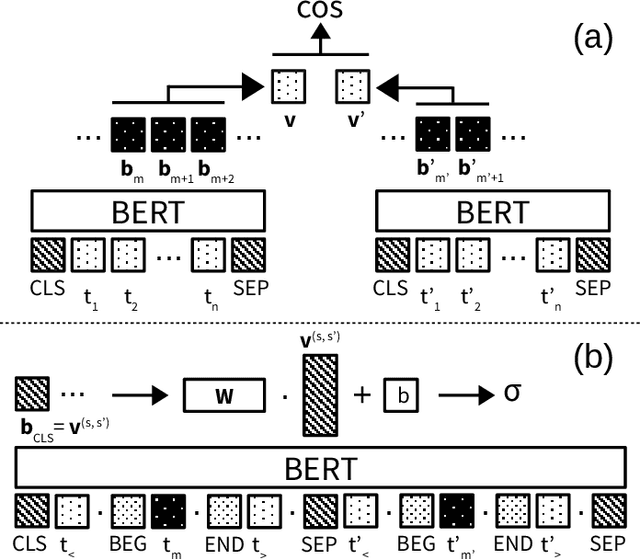
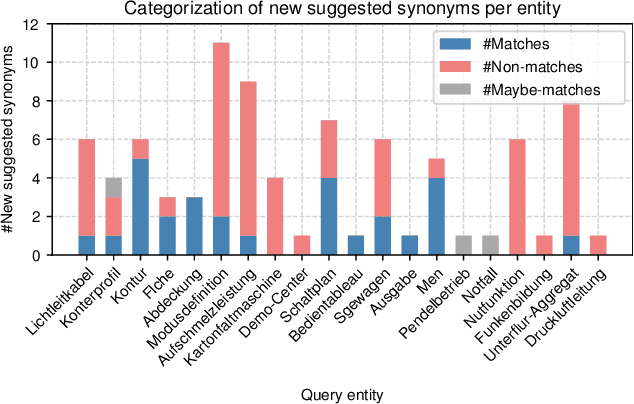

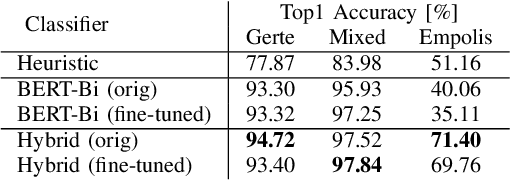
Abstract:Entity linking, the task of mapping textual mentions to known entities, has recently been tackled using contextualized neural networks. We address the question whether these results -- reported for large, high-quality datasets such as Wikipedia -- transfer to practical business use cases, where labels are scarce, text is low-quality, and terminology is highly domain-specific. Using an entity linking model based on BERT, a popular transformer network in natural language processing, we show that a neural approach outperforms and complements hand-coded heuristics, with improvements of about 20% top-1 accuracy. Also, the benefits of transfer learning on a large corpus are demonstrated, while fine-tuning proves difficult. Finally, we compare different BERT-based architectures and show that a simple sentence-wise encoding (Bi-Encoder) offers a fast yet efficient search in practice.
Span-based Joint Entity and Relation Extraction with Transformer Pre-training
Oct 08, 2019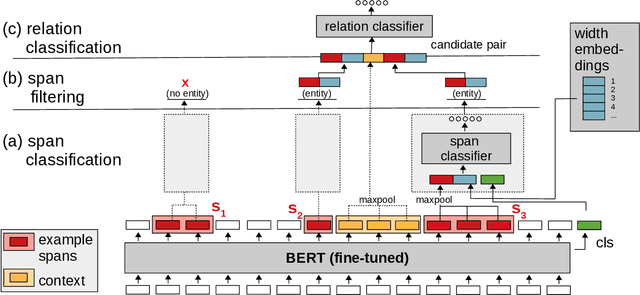
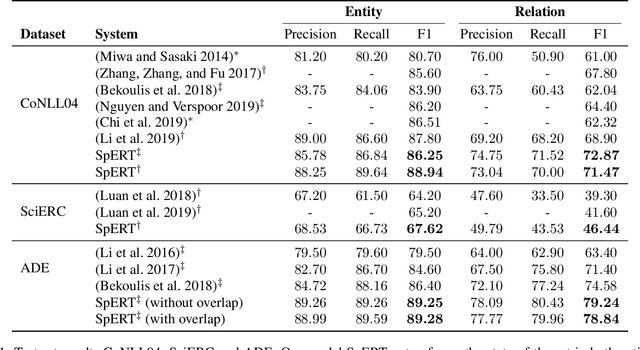
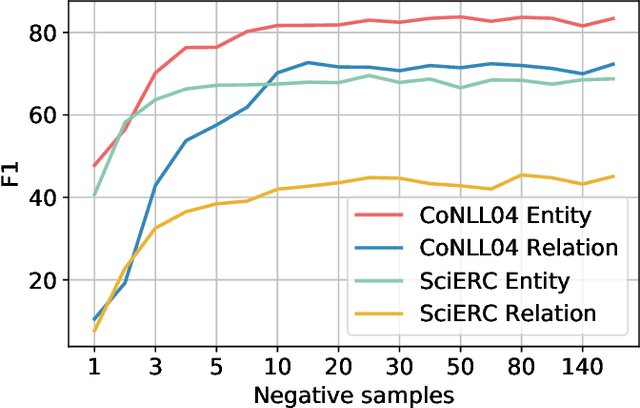

Abstract:We introduce SpERT, an attention model for span-based joint entity and relation extraction. Our approach employs the pre-trained Transformer network BERT as its core. We use BERT embeddings as shared inputs for a light-weight reasoning, which features entity recognition and filtering, as well as relation classification with a localized, marker-free context representation. The model is trained on strong within-sentence negative samples, which are efficiently extracted in a single BERT pass. These aspects facilitate a search over all spans in the sentence. In ablation studies, we demonstrate the benefits of pre-training, strong negative sampling and localized context. Our model outperforms prior work by up to 4.7% F1 score on several datasets for joint entity and relation extraction.
Hamming Sentence Embeddings for Information Retrieval
Aug 15, 2019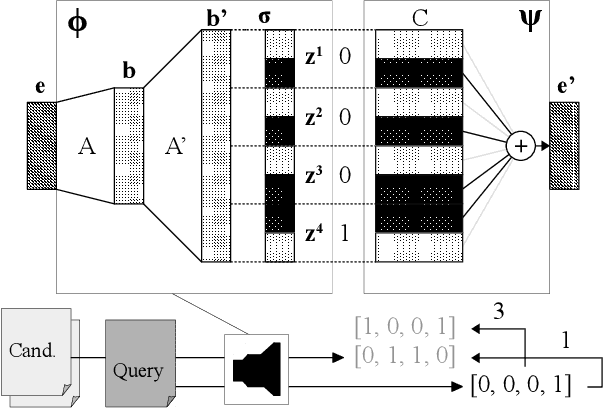
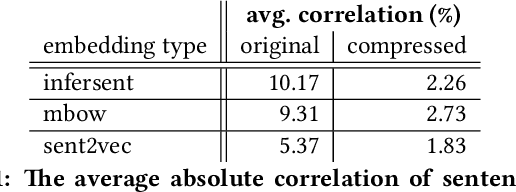

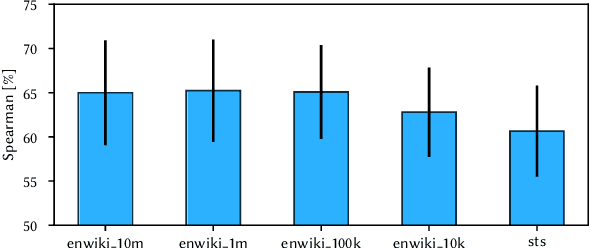
Abstract:In retrieval applications, binary hashes are known to offer significant improvements in terms of both memory and speed. We investigate the compression of sentence embeddings using a neural encoder-decoder architecture, which is trained by minimizing reconstruction error. Instead of employing the original real-valued embeddings, we use latent representations in Hamming space produced by the encoder for similarity calculations. In quantitative experiments on several benchmarks for semantic similarity tasks, we show that our compressed hamming embeddings yield a comparable performance to uncompressed embeddings (Sent2Vec, InferSent, Glove-BoW), at compression ratios of up to 256:1. We further demonstrate that our model strongly decorrelates input features, and that the compressor generalizes well when pre-trained on Wikipedia sentences. We publish the source code on Github and all experimental results.
An Open-World Extension to Knowledge Graph Completion Models
Jun 19, 2019
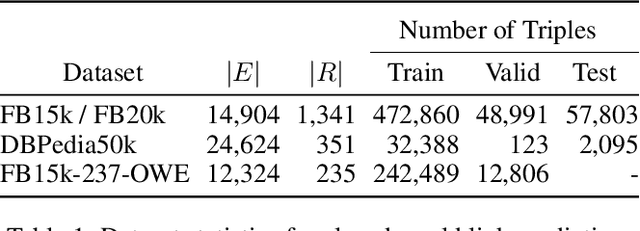

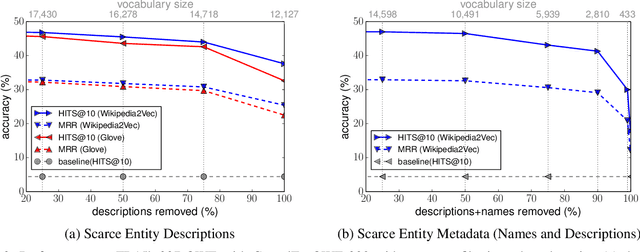
Abstract:We present a novel extension to embedding-based knowledge graph completion models which enables them to perform open-world link prediction, i.e. to predict facts for entities unseen in training based on their textual description. Our model combines a regular link prediction model learned from a knowledge graph with word embeddings learned from a textual corpus. After training both independently, we learn a transformation to map the embeddings of an entity's name and description to the graph-based embedding space. In experiments on several datasets including FB20k, DBPedia50k and our new dataset FB15k-237-OWE, we demonstrate competitive results. Particularly, our approach exploits the full knowledge graph structure even when textual descriptions are scarce, does not require a joint training on graph and text, and can be applied to any embedding-based link prediction model, such as TransE, ComplEx and DistMult.
 Add to Chrome
Add to Chrome Add to Firefox
Add to Firefox Add to Edge
Add to Edge